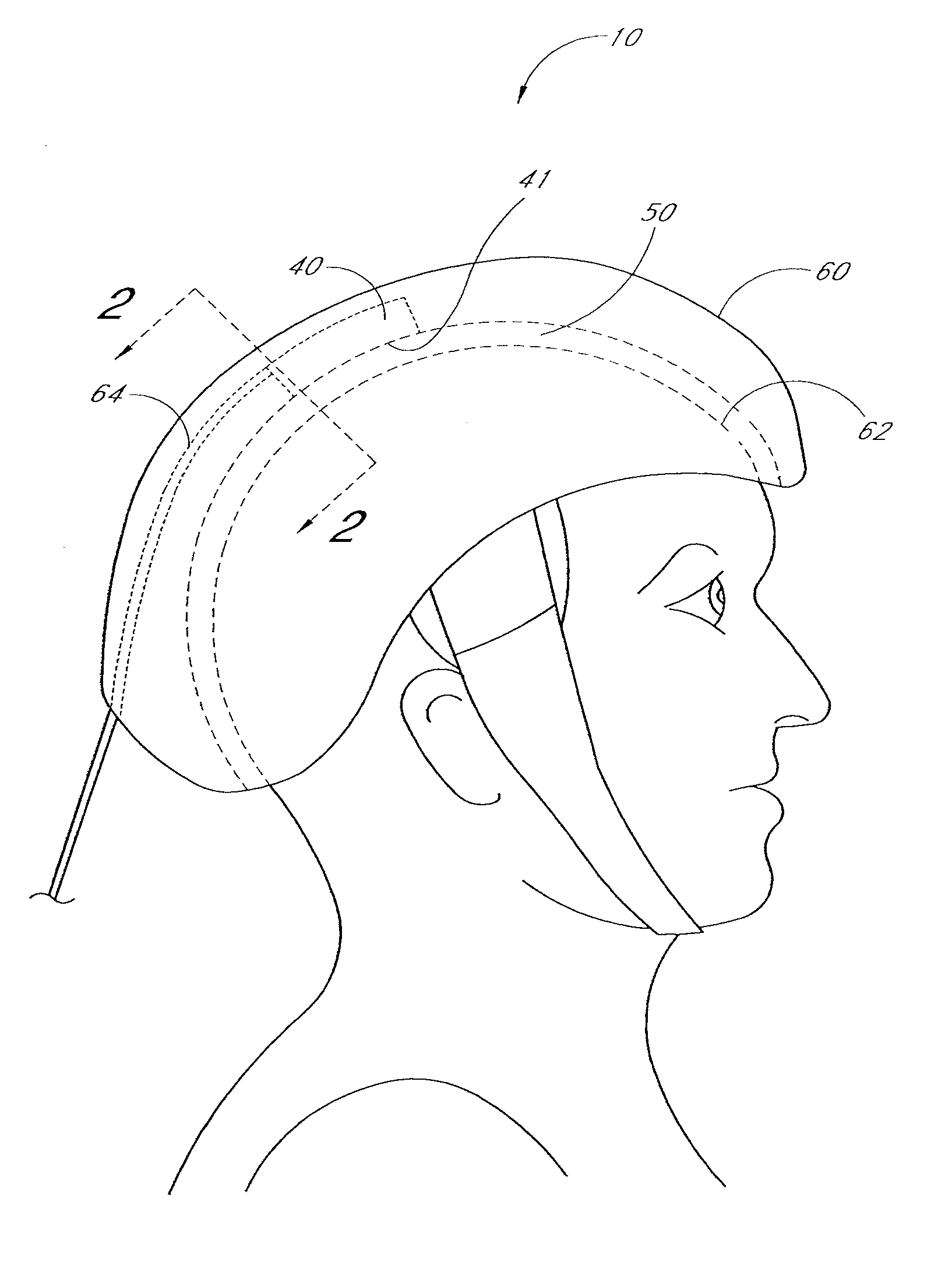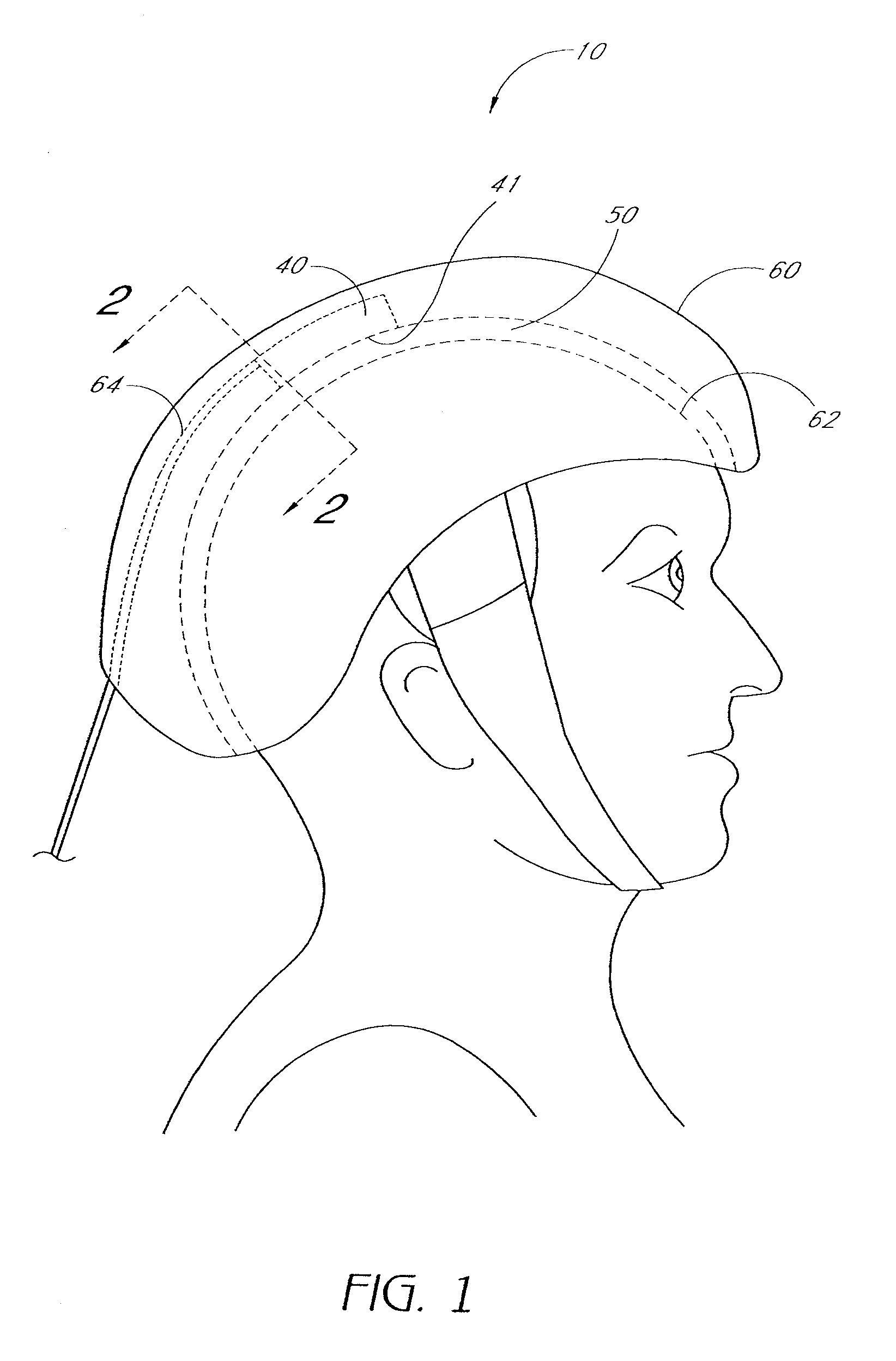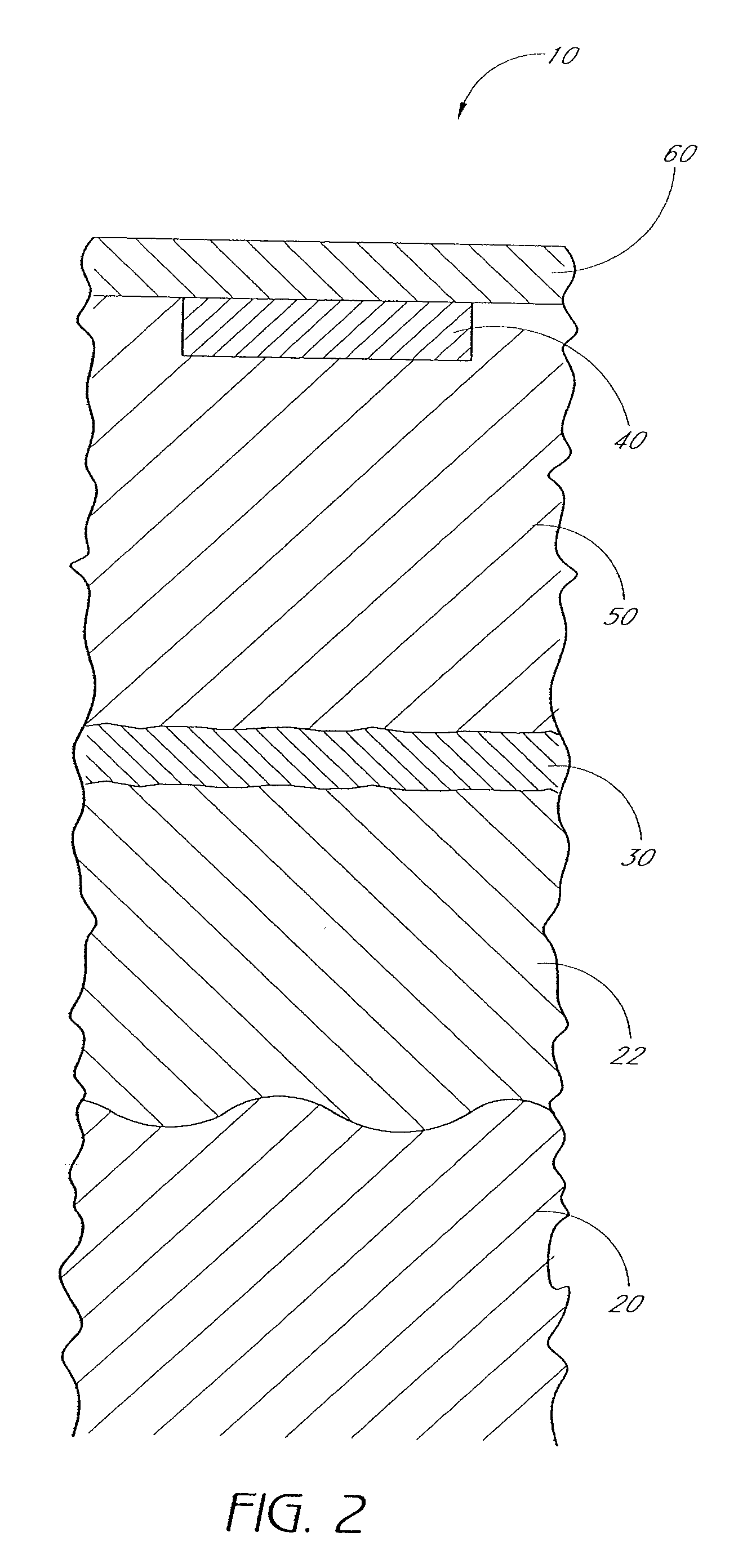Method of treatment of neurological injury or cancer by administration of dichloroacetate
- Summary
- Abstract
- Description
- Claims
- Application Information
AI Technical Summary
Benefits of technology
Problems solved by technology
Method used
Image
Examples
example wearable
Apparatus
[0133]FIG. 19 schematically illustrates an example apparatus 500 which is wearable by a patient for treating the patient's brain. The apparatus 500 comprises a body 510 and a plurality of elements 520. The body 510 covers at least a portion of the patient's scalp when the apparatus 500 is worn by the patient. Each element 520 has a first portion 522 which conforms to a corresponding portion of the patient's scalp when the apparatus 500 is worn by the patient. Each element 520 has a second portion 524 which conforms to a light source (not shown in FIG. 19) removably contacting the element. Each element 520 is substantially transmissive (e.g., substantially transparent or substantially translucent) to light from the light source to irradiate at least a portion of the patient's brain. In certain embodiments, the light from the light source after being transmitted through each element 520 has a power density which penetrates the patient's cranium to deliver an efficacious amoun...
example 1
[0209]An in vitro experiment was done to demonstrate one effect of phototherapy on neurons, namely the effect on ATP production. Normal Human Neural Progenitor (NHNP) cells were obtained cryopreserved through Clonetics of Baltimore, Md., catalog #CC-2599. The NHNP cells were thawed and cultured on polyethyleneimine (PEI) with reagents provided with the cells, following the manufacturers' instructions. The cells were plated into 96 well plates (black plastic with clear bottoms, Becton Dickinson of Franklin Lakes, N.J.) as spheroids and allowed to differentiate into mature neurons over a period of two weeks.
[0210]A Photo Dosing Assembly (PDA) was used to provide precisely metered doses of laser light to the NHNP cells in the 96 well plates. The PDA included a Nikon Diaphot inverted microscope (Nikon of Melville, N.Y.) with a LUDL motorized x,y,z stage (Ludl Electronic Products of Hawthorne, N.Y.). An 808 nanometer laser was routed into the rear epi-fluorescent port on the microscope u...
example 2
[0216]In a second example, transcranial laser therapy was investigated using a low-energy infrared laser to treat behavioral deficits in a rabbit small clot embolic stroke model (RSCEM). This example is described in more detail by P. A. Lapchak et al., “Transcranial Infrared Laser Therapy Improves Clinical Rating Scores After Embolic Strokes in Rabbits,” Stroke, Vol. 35, pp. 1985-1988 (2004), which is incorporated in its entirety by reference herein.
[0217]RSCEM was produced by injection of blood clots into the cerebral vasculature of anesthetized male New Zealand White rabbits, resulting in ischemia-induced behavioral deficits that can be measured quantitatively with a dichotomous rating scale. In the absence of treatment, small numbers of microclots caused no grossly apparent neurologic dysfunction while large numbers of microclots invariably caused encephalopathy or death. Behaviorally normal rabbits did not have any signs of impairment, whereas behaviorally abnormal rabbits had l...
PUM
| Property | Measurement | Unit |
|---|---|---|
| Time | aaaaa | aaaaa |
| Frequency | aaaaa | aaaaa |
| Frequency | aaaaa | aaaaa |
Abstract
Description
Claims
Application Information
 Login to View More
Login to View More - R&D
- Intellectual Property
- Life Sciences
- Materials
- Tech Scout
- Unparalleled Data Quality
- Higher Quality Content
- 60% Fewer Hallucinations
Browse by: Latest US Patents, China's latest patents, Technical Efficacy Thesaurus, Application Domain, Technology Topic, Popular Technical Reports.
© 2025 PatSnap. All rights reserved.Legal|Privacy policy|Modern Slavery Act Transparency Statement|Sitemap|About US| Contact US: help@patsnap.com



